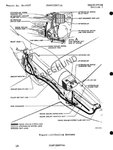wuzak
Captain
7" stroke on the Centaurus.
Was it an 11" centre to centre distance on the master rod Greg? Which be a low rod length to stroke ratio, I would think.
Was it an 11" centre to centre distance on the master rod Greg? Which be a low rod length to stroke ratio, I would think.

